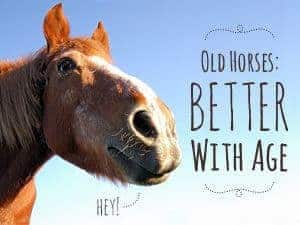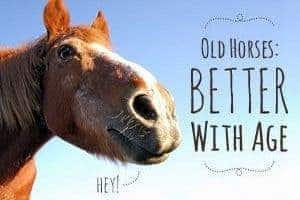Early is Better than Late when Calling the Vet
- Topics: Old Horses: Better With Age
It’s always interesting to me to compare the treatments and outcomes of two horses with similar health problems, especially when the end results are entirely different. One of the most telling comparisons I’ve run across in my equine life involves two 20-something Appaloosas, both diagnosed with equine recurrent uveitis (ERU, sometimes referred to as moon blindness).
The first case involves a big mare named Willow, who resided a farm at which I taught riding lessons for a while. Willow was a tough old girl who rarely needed to see the veterinarian; in fact, keeping her weight up during the cold winters appeared to be her owners’ biggest health challenge for many years.
In the summer of 2008, Willow’s owners noticed one of her eyes draining after she’d spent time in the pasture. Although they continued to monitor the draining, they did not consider it a health problem and, thus, elected not to have a veterinarian come evaluate the mare.
The ocular draining continued through the summer and into the fall until one day, Willow came in from the field with her eye swollen and nearly crusted shut. At that point her owners called their veterinarian, who quickly diagnosed the mare with ERU. The veterinarian cautioned Willow’s owners that, because they’d waited so long to get the problem checked out, the mare’s prognosis for long-term visual function was guarded at best. After ensuring no corneal ulcers were present, the veterinarian prescribed treatment–which included non-steroidal anti-inflammatories and topical corticosteroids–and suggested Willow wear a fly mask with ultraviolet (UV) protection when she spent time in the sun
Create a free account with TheHorse.com to view this content.
TheHorse.com is home to thousands of free articles about horse health care. In order to access some of our exclusive free content, you must be signed into TheHorse.com.
Start your free account today!
Already have an account?
and continue reading.

Written by:
Erica Larson
Related Articles
Stay on top of the most recent Horse Health news with













